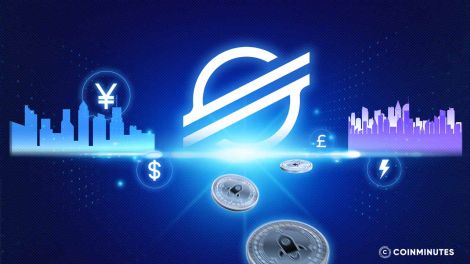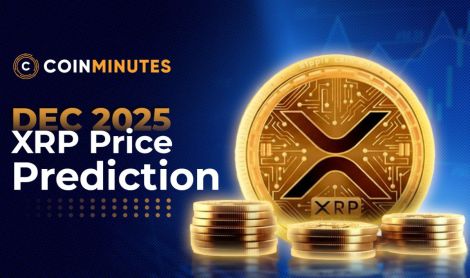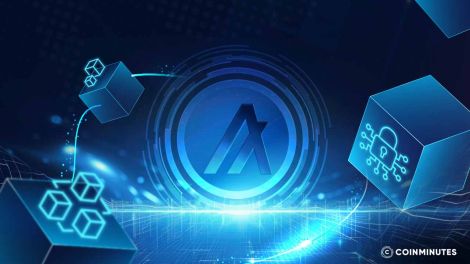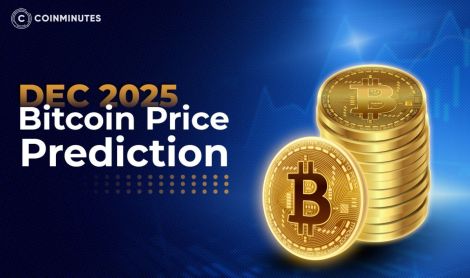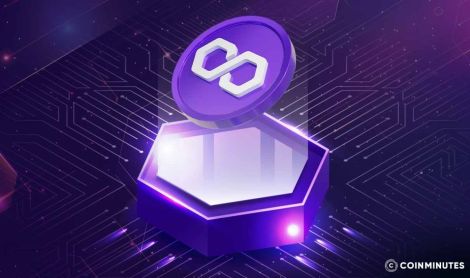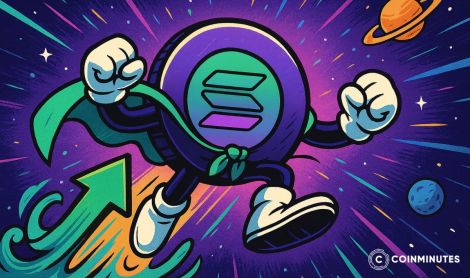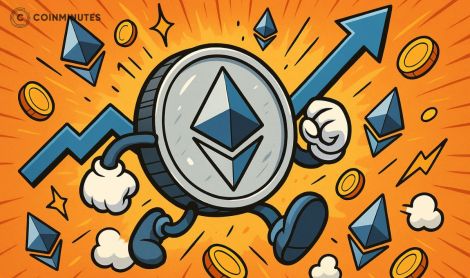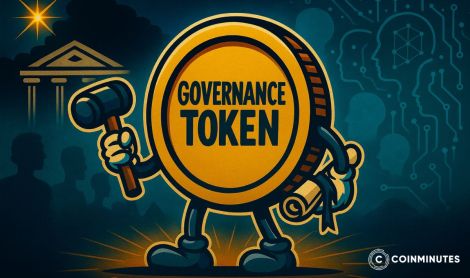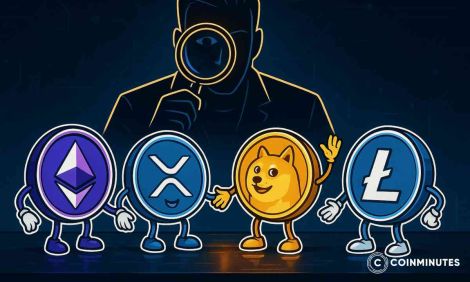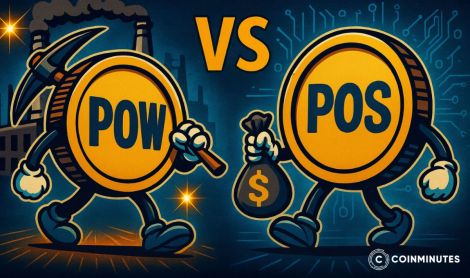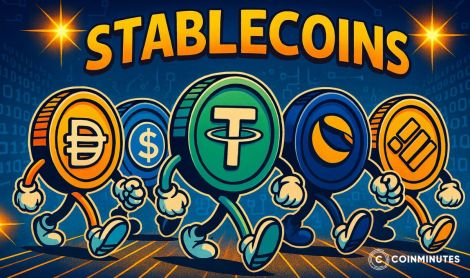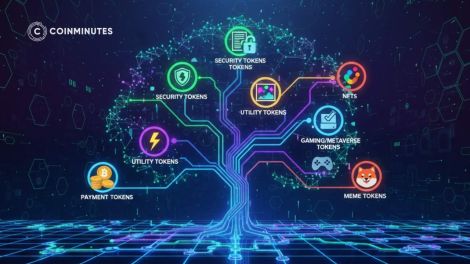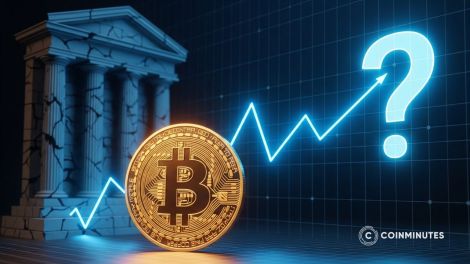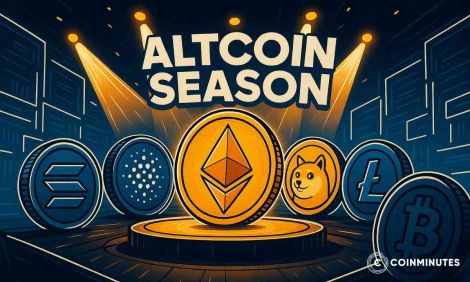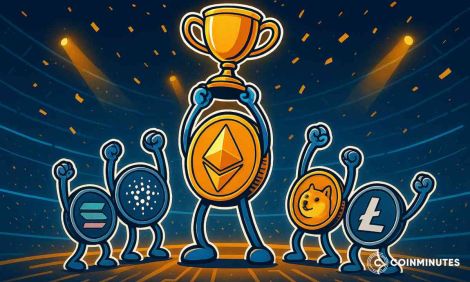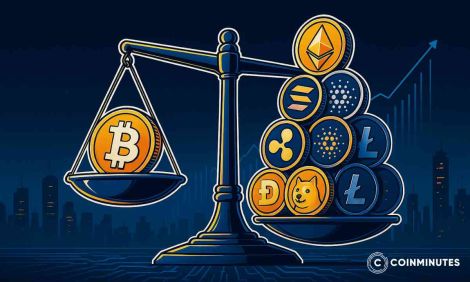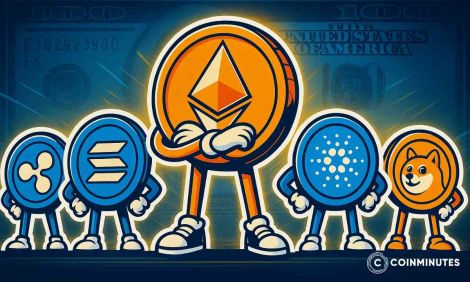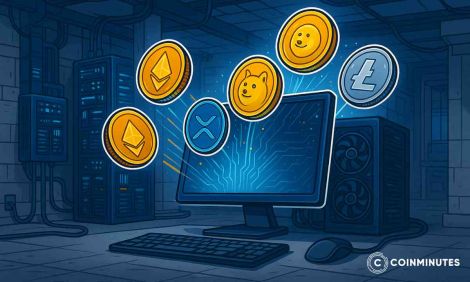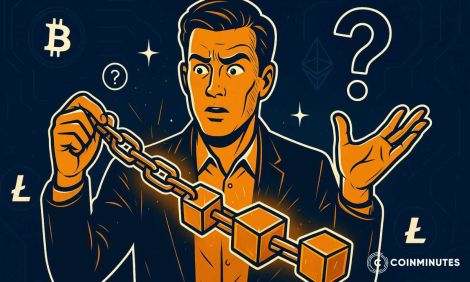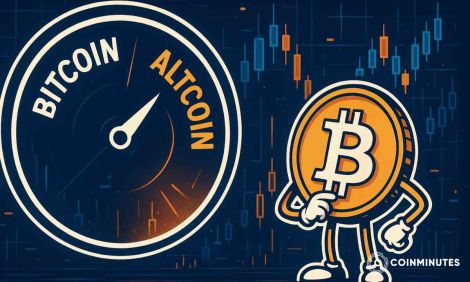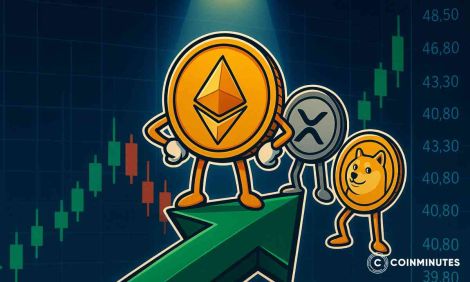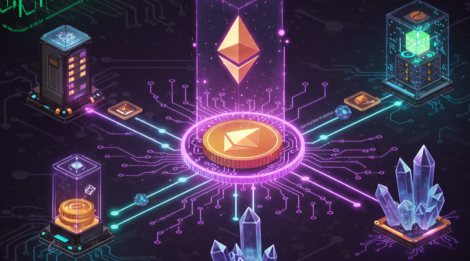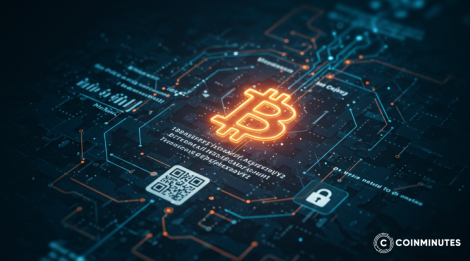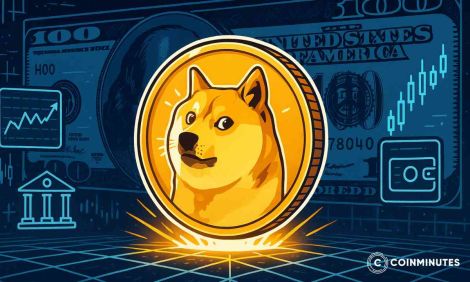Utility Token Mastery: A Comprehensive Overview for Crypto Enthusiasts in 2025

I've been watching the utility token market blow up over the past year. Honestly, it still surprises me how fast big money is moving in. At CoinMinutes, we've been tracking this trend closely, and the institutional adoption curve is steeper than anything we expected.
But here's the thing - most people I talk to still don't get how these digital assets actually fit into crypto overall.
Understanding Utility Tokens: The Fundamentals
So what does a utility token actually do? They're basically digital assets that unlock stuff in blockchain ecosystems. Not like Bitcoin that's mainly for payments - these tokens actually serve some function on their platforms. I think of them as keys that open specific doors.
When you buy one, you're not getting ownership in the company. You're just buying the right to use whatever service they're offering or join certain activities in their ecosystem. Pretty straightforward once you get it.
Utility tokens work through smart contracts - self-executing code that enforces rules without intermediaries. These tokens typically follow established standards like ERC-20 (Ethereum) or BEP-20 (Binance Smart Chain), which define how they interact with their underlying blockchain.
These tokens do all sorts of things. Sometimes they let you access platform services. Other times, you're using them to pay transaction fees. A lot of projects use them for governance voting too.
Staking is another big one - you lock up tokens to earn rewards or help secure the network. And the thing that people overlook is how they incentivize certain behaviors. I remember when I first tried Brave browser back in 2019 and got some BAT tokens. That moment totally changed how I thought about digital ads - suddenly my attention had actual, tokenized value.
The Legal and Regulatory Framework for Utility Tokens
The regulatory landscape for utility tokens remains complex but has gained clarity since the early ICO days. Most regulatory authorities, including the SEC, apply the Howey Test to determine whether a token constitutes a security. For a token to be classified as a utility token rather than a security, it generally must:
-
Provide genuine utility within a functioning ecosystem
-
Not primarily create expectations of profit from others' efforts
-
Have a primarily consumptive rather than investment purpose
The difference matters tremendously. Security tokens face strict registration requirements and investor restrictions, while utility tokens generally operate with more flexibility - though they still must comply with relevant consumer protection and anti-money laundering regulations.

Where law meets the blockchain line
Case Studies in Token Classification
XRP Classification Controversy and Legal Implications
The SEC's lawsuit against Ripple Labs over XRP's classification has become a landmark case for the industry. Basically, it boils down to: Is XRP just a utility token for cross-border payments, or was it an unregistered security?
Ripple keeps saying XRP helps financial institutions with liquidity for international transfers. The SEC disagreed - they thought Ripple was creating investment expectations. The case is still messy, though the court did rule secondary market sales aren't securities transactions, which was huge.
The court ruling that XRP's secondary market sales don't constitute securities transactions has provided partial clarity, though the case continues to have implications for the broader market.
Ethereum's Evolution from Platform Token to Store of Value
Ethereum's ETH occupies a unique position in the token landscape. It serves clear utility functions:
-
Paying gas fees for transaction processing
-
Staking to secure the network (post-Merge)
-
Accessing network resources
Yet it has also developed investment characteristics as a store of value and institutional investment vehicle. This dual nature has created regulatory questions, though the SEC's statements suggest they no longer view current ETH as a security.
Ethereum demonstrates how utility tokens can evolve beyond their original purpose while maintaining their core functionality. I've been fascinated watching this evolution - particularly how the Merge fundamentally changed ETH's tokenomics in ways that still aren't fully appreciated by the market.
Bitcoin's Unique Position in Token Classification
Bitcoin doesn't really fit neatly into these token buckets. It doesn't have the programmable utility of platform tokens, but it definitely serves specific purposes - censorship-resistant payments, digital store of value, and a neutral settlement layer.
Most regulators, especially the CFTC, just call it a commodity instead of a security or utility token. That regulatory clarity is a big reason why institutions feel safer with Bitcoin compared to other digital assets.
Compliance Considerations for Token Projects
If you're launching a token, you need to think about compliance from day one. This means doing your legal homework against securities frameworks, looking at regulations in each place you want to operate, and keeping detailed records of your decisions.
You'll probably need KYC/AML procedures too. And definitely talk to lawyers who specialize in blockchain - this isn't DIY territory. The annoying part is that compliance isn't just a checkbox; regulations keep changing, so you're never really "done."
Real-World Utility Token Examples and Applications
Understanding utility tokens in theory is important, but seeing how they function in real-world ecosystems provides crucial context. I've spent the last three years analyzing implementation patterns across various sectors, and the DeFi space particularly excites me - it's where we're seeing the most innovation in token utility models.
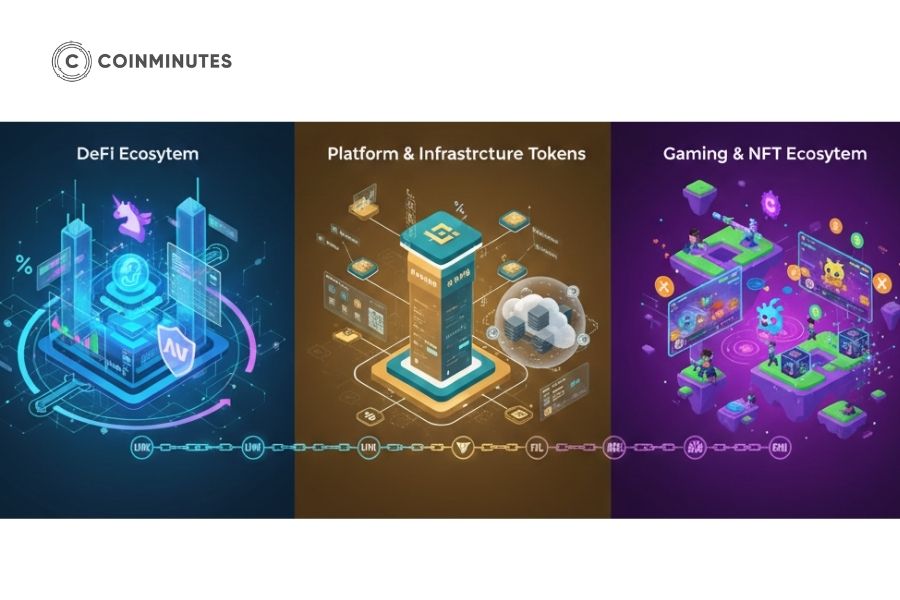
How utility tokens power the real world
DeFi Ecosystem Utility Tokens
Decentralized finance has produced some of the most successful utility token implementations:
This creates a sort of circular economy - the token being useful drives more people to adopt it. Chainlink's processed billions of on-chain requests since launching, securing tens of billions in value across different blockchains.
LINK solved a really frustrating problem we had back then - centralized price feeds were huge points of failure. I still remember when Chainlink rolled out their decentralized oracle solution. Game-changer.
Uniswap's token started out purely for governance but they've expanded what it does - potential fee sharing, special access features, etc. Trading volumes bounce around a lot depending on market conditions, sometimes hitting several million daily. Shows how utility can grow as the platform itself grows.
The Uniswap token distribution remains one of the most brilliant token launches I've witnessed. By retroactively rewarding users with governance rights, they created instant buy-in from a community that had already demonstrated commitment to the protocol. This approach - which I've started calling "earned distribution" - creates much stronger alignment than traditional sales.
Aave (AAVE) uses its token for both governance and as part of its safety module, where stakers contribute to protocol insurance in exchange for rewards. This dual utility creates natural demand that scales with protocol usage while simultaneously improving security.
I've personally staked AAVE since 2021, and watching how the safety module performed during market turbulence in 2022 gave me much greater confidence in the model. It's a clever design that aligns token holder interests with platform stability - something many projects still struggle with.
What makes these tokens successful is their integration into functional ecosystems where token utility directly correlates with platform usage. The token mechanics don't feel forced - they solve genuine problems within their ecosystems.
Platform and Infrastructure Utility Tokens
Some of the most established utility tokens power broader platforms:
Binance Coin (BNB) originally offered trading fee discounts on Binance but has expanded to support an entire ecosystem including the BNB Chain, Launchpad platform, and numerous partner services. Users who pay with BNB receive significant discounts, creating strong incentives for holding and using the token.
Filecoin (FIL) facilitates decentralized storage by creating a marketplace where users pay storage providers in FIL. While exact capacity figures vary by source, industry analysts estimate the network now supports approximately 18 exbibytes of storage capacity across over 3,500 providers. The tokenomics here are particularly elegant - storage providers must stake FIL proportional to their offered capacity, creating a powerful economic security mechanism.
These examples show how utility tokens can scale from single-use cases to powering entire ecosystems as they mature.
Gaming and NFT Ecosystem Tokens
Gaming has emerged as a powerful utility token use case - and it's the area where I'm personally most bullish for 2025-2026:
Axie Infinity (AXS) serves multiple functions within its play-to-earn ecosystem, including governance rights and staking rewards. The game's circular economy demonstrates how token utility can create sustainable economic models in virtual worlds.
Enjin Coin (ENJ) provides infrastructure for creating and managing gaming NFTs, with each NFT backed by ENJ that can be recovered if the item is melted. This "melt value" basically creates a floor for prices and means the token stays useful long-term.
Gaming is where token economics get interesting - bridging virtual economies with real-world value. The 2021-22 cycle created a lot of hype that crashed hard, but I'm still pretty convinced gaming will be how most normal people eventually get into tokens. It just makes sense as an entry point.
Getting From Concept to Working Token
Going from "hey, we should make a token" to actually launching one that works? Lot harder than it sounds. Let me walk through some of the key stuff.
Tokenomics Design and Economic Modeling
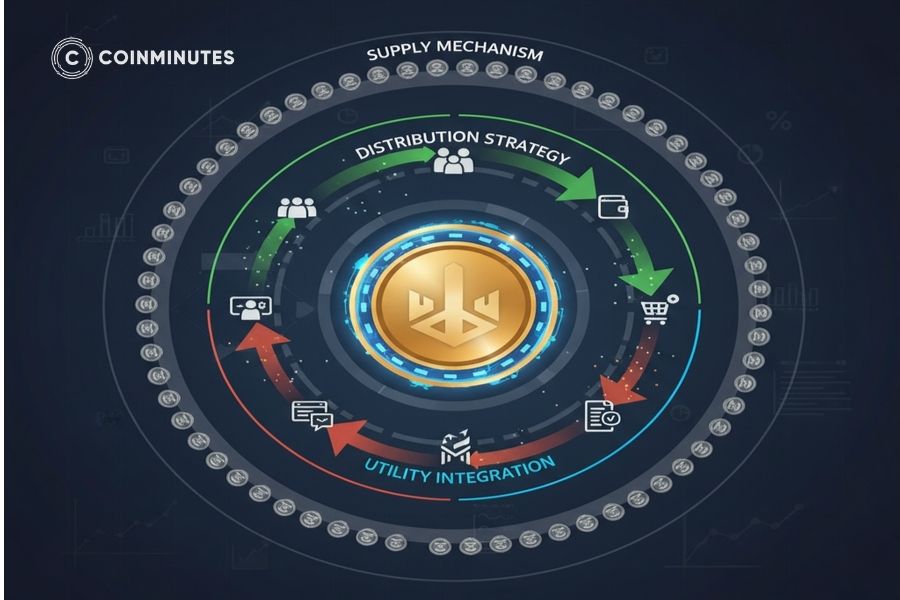
How tokenomics shapes real value flow
Effective utility tokens require thoughtful economic design from the beginning:
Supply mechanism
Fixed supply creates scarcity, while controlled inflation can fund ongoing development. Your choice should align with your token's purpose and long-term sustainability goals.
Distribution strategy
Fair launches generally create more sustainable communities than heavily pre-mined tokens. Consider how token allocation impacts perceptions of decentralization and fairness.
Value capture
Mechanisms like token burning, staking requirements, or fee sharing help align token value with platform success. The most successful tokenomics designs create natural demand for the token that scales with platform adoption.
Utility integration
Ensuring the token has non-speculative reasons to be used regularly is crucial. For instance, when BNB is used for transaction fee discounts, increased trading volume naturally drives token demand.
Technical Architecture and Platform Selection
Picking the right blockchain for your token is trickier than it seems. Transaction costs matter a lot - Ethereum is still popular but those gas fees can kill your project when the network gets busy. I've seen projects literally become unusable during peak periods.
If you're expecting tons of transactions, you might want Solana, Avalanche, or Layer-2 solutions instead. Your expected users and how often they'll transact should guide this decision.
More projects are making their tokens work across multiple chains now too. It's a pain to develop, but users expect that flexibility.
More established chains typically offer better security auditing tools. Consider the sensitivity of your application and the value at stake.
Should your token work on multiple chains? Probably. Multi-chain is becoming pretty essential if you want people to actually use your token. The standard selection matters too - ERC-20 is still the most widely supported for fungible tokens, while NFTs usually use ERC-721 or ERC-1155. Each has different capabilities you'll need to match with what your token's supposed to do.
CoinMinutes' Token Evaluation System (Still a Work in Progress)
Back when I was working at other firms before CoinMinutes, I cobbled together my own way to evaluate tokens. Combines fundamentals, market stuff, and risk assessment. We still use a version of it at CoinMinutes, though I've tweaked it based on what's worked and what hasn't.
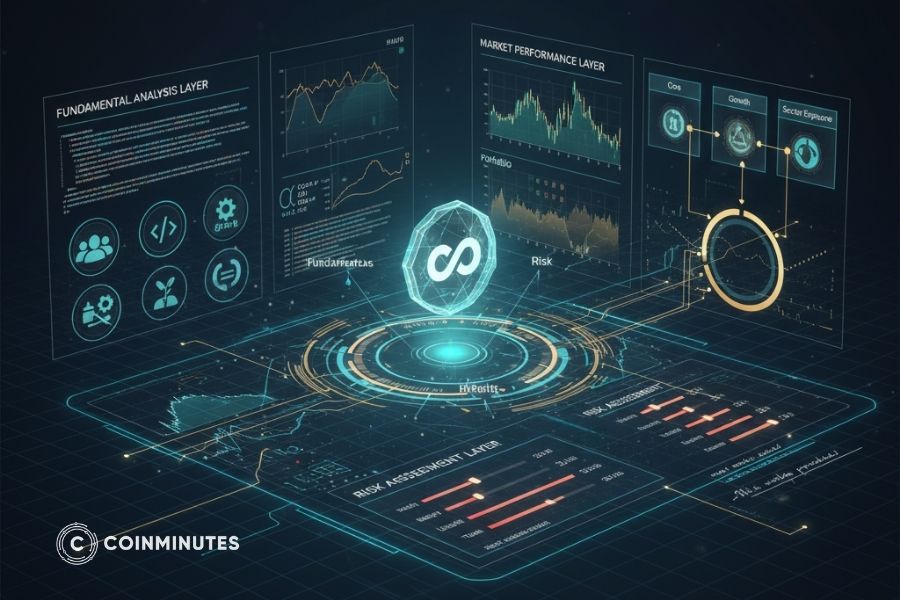
Inside CoinMinutes token evaluation system
For fundamentals, you gotta look at the code quality and security practices. Is the team actually building something new or just copying someone else? The team matters too - their tech skills, business sense, track record. Anonymous teams are way riskier, though sometimes they work out okay.
You need to check if people are actually using the thing, not just speculating on it. Daily active addresses, transaction counts - that kind of stuff tells you if there's real utility happening.
Analyze whether token value accrual mechanisms align with platform growth. Many projects have strong products but poorly designed tokens that don't capture that value.
Also consider whether the project has sustainable advantages in its target market.
Market Performance Indicators
Strong utility tokens typically exhibit:
Network growth rate
Increasing users and transactions typically precede sustainable price appreciation. Look for consistent growth rather than sporadic spikes.
Developer activity
Active GitHub repositories and growing developer communities signal ongoing innovation and platform health.
Token distribution
Balanced distribution among users (not just speculators) indicates genuine utility adoption. Excessive concentration among few wallets creates centralization and dumping risks.
Token velocity
The rate at which tokens circulate should be appropriate to their use case. Too high can prevent value accrual, while too low may indicate lack of actual utility.
Liquidity depth
Thin order books can lead to extreme volatility and manipulation. Sufficient liquidity across multiple venues supports stable price discovery.
Risk Assessment and Due Diligence
What About Risks? There's Always Risks.
When I look at token risks, I worry about a few things. Smart contract security is huge - unaudited or badly designed contracts can blow up in spectacular ways. Always check those audit reports.
The regulatory stuff keeps me up at night too. Projects in legal gray areas might be cheap for a reason. Some jurisdictions are friendlier than others.
How committed is the team? Check those vesting schedules. Teams that can dump all their tokens at once probably will. I've seen it happen too many times.
Consider whether the business model works without constant token price appreciation. Many projects rely on unsustainable token economics that collapse when growth slows.
I personally maintain a risk scorecard for each project I analyze, assigning weighted scores across these categories (with regulatory risk weighted much higher than most analysts recommend). This systematic approach helps counter the emotional biases that often cloud crypto investment decisions. I learned this discipline the hard way after losing significantly on a project that I loved conceptually but hadn't properly risk-assessed.
How I Think About Fitting Tokens Into Portfolios
I tend to separate tokens into a few buckets when investing. The established ones with working ecosystems? Those can be core holdings. Newer projects with good fundamentals but not much market attention yet could be growth plays.
Sometimes I just want exposure to specific sectors - DeFi, gaming, whatever's interesting. Token investments can be a way to get that.
Sizing your positions is tricky. A fund manager once told me something that stuck: "Size based on your confidence in the actual utility, not how much you hope the price goes up." Pretty good advice.
Where Is This All Headed?
The token space changes so fast it's hard to keep up. Regulations are still evolving - that's probably the biggest question mark. More countries seem to be creating specific frameworks for different token types, which helps with clarity. Some industry groups are trying to establish standards too.

The evolving future of utility token
If regulations suddenly shift or we see major enforcement actions against previously "safe" projects, all bets are off. The industry's still vulnerable to those kinds of shocks.
On the tech side, cross-chain bridges are making tokens more useful across different blockchains. Layer-2 solutions are bringing down transaction costs, which matters a ton for tokens that need frequent interactions. And I'm seeing more privacy tech that lets tokens be private but still regulatory compliant.
What's next? Real-world asset tokenization is gaining momentum - representing usage rights rather than ownership to sidestep securities rules. Social tokens for creator communities are interesting too. And I'm watching projects that use tokens to coordinate physical infrastructure like wireless networks or energy grids.
Despite all the workarounds people use to avoid securities laws, I think security tokens will eventually make more sense for fundraising. The mental gymnastics to avoid securities classification has created some really weird token models that don't actually capture value well.
Why I Started CoinMinutes (And Why You Might Actually Want to Check It Out)
CoinMinutes was born out of the founder's own expensive mistakes and weird chart obsession. We're not Bloomberg or anything fancy - used to just be me and two other crypto degens who spend wayyy too much time analyzing this stuff.
Our newsletter is kinda like this article but weekly, and includes:
-
Market updates that don't suck (I write these usually half-caffeinated at 6am)
-
Where money's actually flowing (not just what CT influencers are shilling)
-
"FOMO Check" sections when I notice everyone getting too excited about garbage
-
Security warnings
-
Deep dives on projects that aren't being hyped yet
If you've read this far, you're probably the kind of person who'd enjoy our slightly unhinged but hopefully useful takes.
Check us out at https://coinminutes.com/ if you want, or don't - I'm not your dad. But our free Friday emails are pretty good, just saying. Hope to see you there!
 English
English
 Vietnamese
Vietnamese


